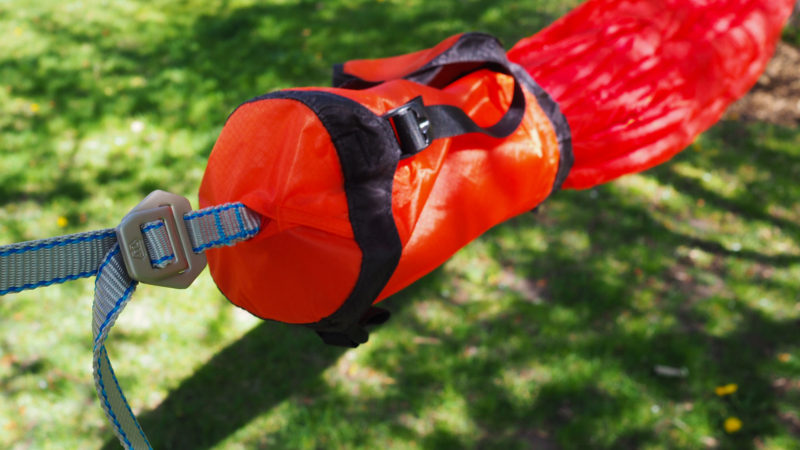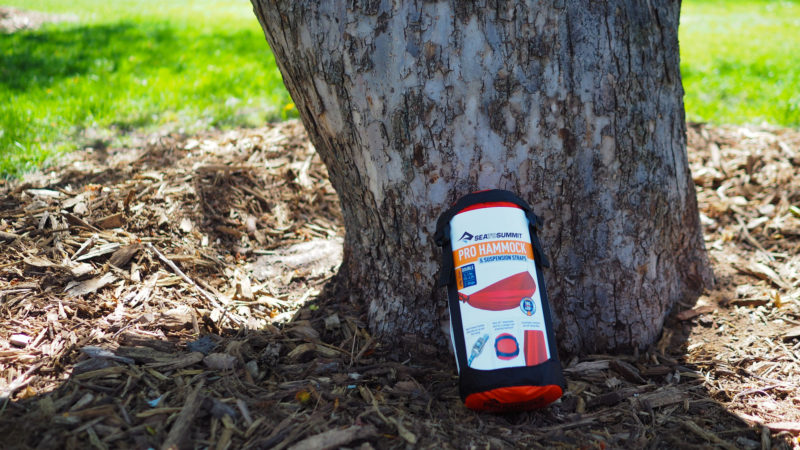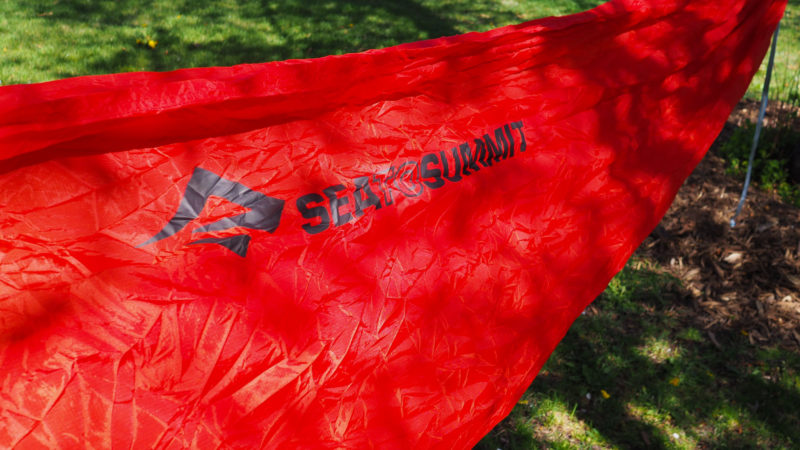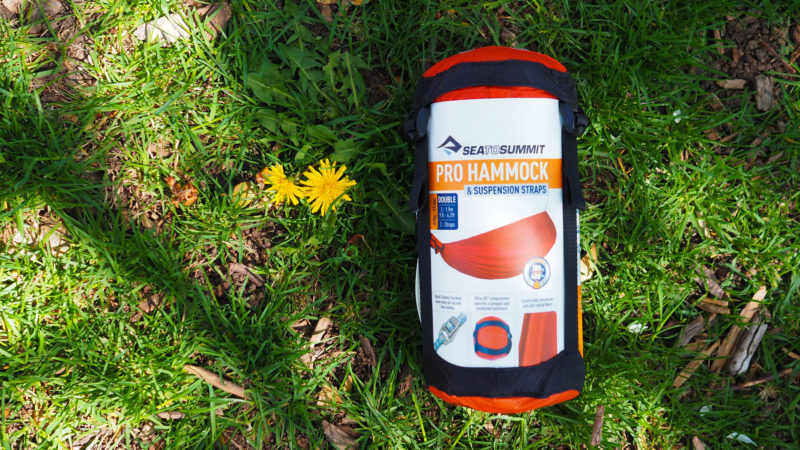 When you buy something using links in our stories, we may earn a small commission. Read more about our policy.
When you buy something using links in our stories, we may earn a small commission. Read more about our policy.
Sea to Summit started in 1983 in Perth, Australia, when Roland Tyson, a climber and adventurer, started making his own lightweight gear when he couldn’t find anything to meet his needs. In 1990, Tim Macartney-Snape approached Roland to help outfit him for an upcoming Everest expedition. The gear worked so well, Sea to Summit was born. Great name, considering the origins.
In the past three decades, Sea to Summit has dominated the lightweight gear category, offering high-quality products that are reasonably-priced and won’t bog you down—from sleeping bags and pads to camp kitchen and travel gear.
Sea to Summit’s hammocks and hammock accessories offer something different from competitors in many ways—namely the fabric and suspension style. At great prices and with an array of add-ons, the hammocks are great sleep systems for campers who want to elevate their sleeping game.
Let’s take a look at how the Pro Hammock Set does out in the field.
Are Sea to Summit hammocks easy to hang?
This was my first concern trying out this product. It’s quite a different suspension system from traditional hammocks that use carabiners and straps with various loop points.
The answer is YES, and that’s coming from a previous skeptic. Even though I consider myself a true expert in hammock hanging, I am traditionally weary of hammocks that use built-in buckles to attach to tree straps.
I guess I have a bit of PTSD after trying—and barely succeeding—to hang a similar style hammock from a small company that shall remain unnamed. It’s worth noting that they are no longer in business, so perhaps the problem wasn’t me.
The difference here is that Sea to Summit is a reputable brand that properly field tests products before releasing them (go figure), so while I was a bit more optimistic, I was still a little nervous I wouldn’t be able to figure it out so easily.
You see, most gathered-end hammocks—as they’re called—have a carabiner at each end. You use this clip to attach it to a strap with multiple loop points, choosing the right one based on the distance of the trees and how much slack you want in the hammock.
But, there’s more than one way to skin a cat. And I am here to say that I did figure out Sea to Summit’s buckle system, and it is great. I’m not going to say I prefer it over carabiners—let’s not get carried away here—but there are a few advantages to this setup.

Buckle suspension system
When I opened the Sea to Summit hammock the first time I used it at a park, I was met with the intimidating metal buckles on each end of the included straps and a complementary buckle at each end of the hammock. Most people, I can only assume, would immediately know what to do here. There’s even a picture of a tree with an arrow on the buckles to help guide you.
I fidgeted for a moment, really wanting to outsmart this thing on my own. However, I surrendered at the first hint of defeat. Actually, let’s just call it a delay. I’m sure I could’ve hung it without Googling how to, but why risk the frustration?
In a matter of seconds, I had both ends properly hooked and quickly adjusted the strap lengths and found the perfect hammock height and angle. It really is so simple.
The two high-strength plated-steel buckles on the end of the straps firmly latch into the buckles on either end of the hammock. They’re very sturdy. No slipping, no sliding, and no knots required.

Hammock straps
The buckle system is a big differentiator for Sea to Summit. And, it can save you money because the straps are included in this hammock kit vs. sold separately, as with most other hammocks you’ll come across. These buckles are also much lighter than traditional carabiners, so if weight matters to you, this is a huge advantage for the Pro Hammock.
Although, it’s worth mentioning that Sea to Summit hammocks can only be hung with their straps, given this setup. While I usually throw any ol’ set of straps in my backpack along with my hammock of choice, it’s important that this kit stays together, which is easy to do because—also unlike most other hammocks—the straps are stored inside the same stuff sack as the hammock.
Sea to Summit’s hammock straps are made of 15mm non-stretch webbing and hold in place very well. They don’t sag or stretch as you lay down, and the straps didn’t slip from the buckles even a little bit, though definitely put a little weight on it before jumping in to make sure you’ve hung it properly.
Each strap is 10’ long, meaning your trees can be up to roughly 25’ apart (the distance of both straps, plus the hammock, minus the width of the trees, give or take). The trees can be as close together as 11’ or so, as you want a bit of slack in the hammock—ideally a 30-degree angle.
Depending on where you’re going and what the tree situation is, you shouldn’t have a problem finding trees within the range to hang from. Want to know more about hanging from trees with hammock straps?
These straps also have a reflective threading for added visibility at night.

Size
When packed down into the nylon stuff sack, the Sea to Summit Pro Hammock Set (straps and buckles included) is significantly smaller than most double hammocks, even lightweight hammocks. It’s about the size of a Nalgene.
The stuff sack also has this great lid system, with three adjustable straps/buckles to help tighten and close the kit. Tensioners are handy anytime but especially so when you’re backpacking and every square inch matters. It’s a great way to shrink down the hammock and straps into the smallest pack possible.
The stuff sack is attached to one end of the hammock, so you just pull it out and string it across to the other tree. Most other gathered-end hammocks have a stuff sack that’s attached at the middle of the hammock on one of the edges, so it doubles as a pocket when it’s hung. It can be handy to put small items in, like keys, phone, or a Nalgene. You won’t have that with the Sea to Summit, but I don’t consider that a deal breaker by any means.

Weight
Th Pro Hammock is one of the lightest double hammock out there, before you start getting into ultra lightweight options. That’s due to the material, which is still a durable, ripstop fabric and will stand up to use and withstand tearing just as well.
Whether this hammock will be your sleep system for overnight camping trips or just an added item for achieving ultimate relaxation, the size and weight makes it a no-brainer to bring along on backpacking trips and day hikes.
| Single | Double | |
| Hammock dimensions | 9′ x 5′ (3 x 1.5 m) | 9′ x 6’2″ (3 x 1.9 m) |
| Packed size | 4″ x 5″ (8 x 13 cm) | 4″ x 6″ (10 x 15 cm) |
| Weight | 19.7 oz (560 g) | 23/6 oz (670g) |
| Weight capacity | 400 lbs (181 kg) | 400 lbs (181 kg) |
| Straps included? | Yes | Yes |
To compare this hammock size to other leading brands, check out our hammock comparison chart, where you can sort by size, weight, and more.
Personally, I’m a sucker for double hammocks even when I’m solo. I like the extra width available to pull over my body to form a little cocoon and help keep the elements out, especially wind. They’re also more comfortable when you’re sitting upright. You can use the wider fabric to create a little headrest and there’s more support for your neck and shoulders.
The fact this double hammock is so lightweight and compact, you may just end up tossing it in your bag for just-in-case hammock moments. It barely adds any weight to a daypack, and you’ll be glad to be able to kick up and relax on a long hike. I’m more inclined to bring this hammock over some of the others I own because it’s such a space and weight saver. Most of my double hammocks—plus straps—easily take up twice as much space and a noticeable amount of weight in a backpack.
Material
The hammock is made from soft, ripstop 70D nylon. D refers to denier, essentially the nylon’s thickness. It’s also very breathable fabric that helps wick moisture away.
The material is particularly lightweight but at the same time strong and durable. It’s not as thick and soft as some of the heavier double hammocks out there, but it’s not uncomfortable. You do notice the difference in the material when compared to an ENO DoubleNest or Grand Trunk double hammock, but the small sacrifice in feel of the fabric is made up for in weight and size when it’s packed down.
The hammock material gives a bit, which you want, but doesn’t sag. It’s sturdy yet flexible and comfortable.
The stuff sack itself is made from water-resistant 30D siliconized high-tenacity CORDURA nylon. That’s a mouthful, but goes to show no detail is overlooked. If this hammock is your overnight sleep system, having it protected from rain and water is important.

Sea to Summit hammock accessories
Hammock tree protectors
These are a pretty important part to any hammock setup. With the goal of protecting the trees, the general rule of thumb is the wider the strap, the better, so the weight is dispersed over more area. The thinner the strap, the more it digs into the tree trunk and can potentially damage the bark. This is the reason why hammocks are banned from a lot of parks.
Sea to Summit’s straps are just 3/4 inch, which isn’t very wide. But these tree protector straps are 1.5 inches and easily attach to the straps for extra protection for our tree friends. They’re made of the same great high tenacity, non-stretch webbing and include the plated steel buckles that work with the rest of the system.
Hammock shelter – tarp and bug net
The Sea to Summit Pro Hammock is—of course—compatible with the brand’s tarps and bug net, so you can seamlessly add to your hammock kit depending on how much shelter you need. Unlike other hammocks with built-in bug nets, this a la carte system makes Sea to Summit a much more versatile option, letting you decide what to buy and what to bring on each trip. It also creates one of the lightest hammock sleeping systems.
Sea to Summit sells two hammock tarps, both are great rain fly options when hammock camping. The Hammock Tarp is a five-point design with a single tie-out point on one side. This asymmetrical style offers protection from the elements like wind and rain while giving you a little extra space on one side, whether to enjoy the view or cook, etc. next to your hammock.
The Jungle Hammock Tarp is a traditional rectangle design that offers waterproof protection while hammock camping with non-wicking anchor points and adjustable guy lines.
The Sea to Summit Hammock Bug Net may be a necessity if you plan on sleeping or hanging out where mosquitoes and other insects also hang out. A collapsable spreader pole in the center helps keep the bug net off your face and body, and a spacious side zipper allows for easy in and out.
Hammock gear sling
One of my favorite hammock accessories is the gear sling. It’s like a little baby hammock that hangs under you, keeping all your gear within reach and off the ground—aka clean and dry.
The adorable little gear sling is weighted to support up to 48 lbs. It comes with ropes and adjustable hooks to attach to the end of your hammock. Everything’s right at your fingertips.
Hammock pillow
Ok, so technically this isn’t just for hammocks, but these small, portable pillows also work great for hammock napping or camping.

 When you buy something using links in our stories, we may earn a small commission.
When you buy something using links in our stories, we may earn a small commission. 




